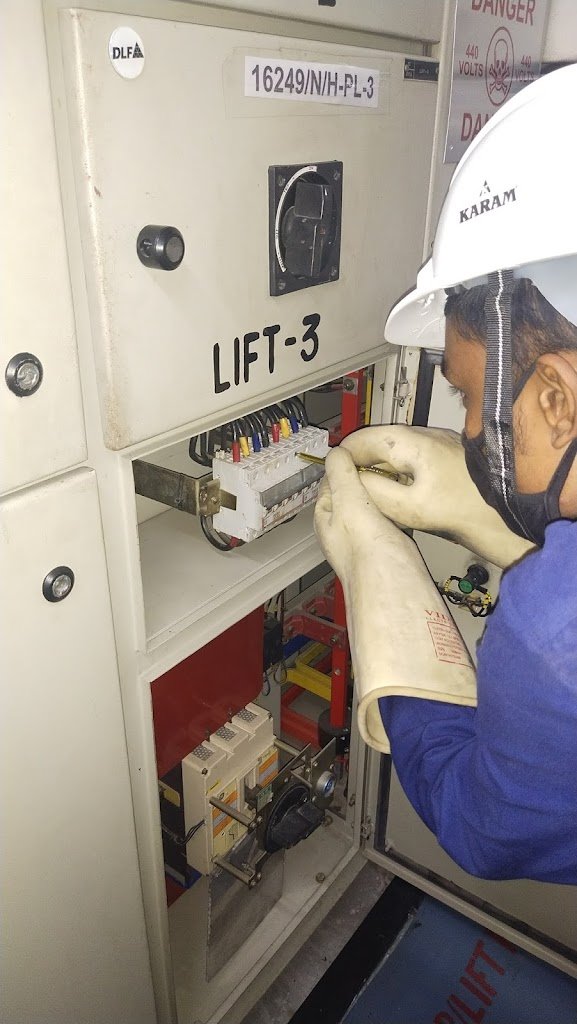If your circuit breaker keeps tripping, it’s a safety feature designed to protect your electrical system from overloading and potentially causing a fire. Here are the steps you can take to diagnose and address the issue:
- Identify the Circuit: Determine which circuit is tripping. The circuit breaker panel should have labels indicating which breaker corresponds to which area of your home. Find the one that keeps tripping.
- Unplug or Disconnect Devices: If you’ve identified the circuit, unplug or disconnect all devices and appliances connected to that circuit. This includes things like lamps, appliances, and electronics.
- Reset the Circuit Breaker: Go to the circuit breaker panel and reset the tripped breaker by moving it from the “off” position to the “on” position. If it immediately trips again, there’s likely a problem with the wiring or the circuit itself.
- Check for Overloading: Circuit breakers can trip if there’s too much demand on the circuit. Make sure you’re not overloading it with too many devices or appliances. Consider redistributing the load among different circuits.
- Inspect for Short Circuits: A short circuit can cause a breaker to trip. Check all the outlets, switches, and electrical boxes on the circuit for loose or damaged wiring. If you find any, you may need to replace or repair them.
- Look for Ground Faults: Ground faults can also trip circuit breakers. Ground fault circuit interrupters (GFCIs) are used to protect against this. Ensure all GFCIs on the circuit are working correctly.
- Examine Appliances: If the problem persists, one of the appliances or devices you had connected to the circuit may be faulty. Test each device one by one to see if any of them trigger the breaker to trip.
- Consider Professional Help: If you’ve gone through these steps and still can’t identify the problem, or if you suspect there’s a more significant electrical issue, it’s time to call a qualified electrician. They can use specialized tools to trace and diagnose the issue safely.
- Upgrade the Circuit: If you find that the circuit regularly trips even after addressing any identified issues, you might need to consider upgrading the circuit to handle the load more efficiently. This could involve rewiring or installing a dedicated circuit for high-power appliances.
Remember, dealing with electrical issues can be dangerous, so if you’re not comfortable or experienced with electrical work, it’s best to hire a professional electrician to ensure safety and compliance with local electrical codes. Never bypass or override a circuit breaker; they are vital for safety.
Circuit breakers trip as a safety measure to prevent electrical overloads and potential hazards. Here are some common reasons why a circuit breaker might keep tripping:
- Overload: The most common reason for a circuit breaker to trip is when the circuit is overloaded. This occurs when there are too many electrical devices or appliances drawing power from the same circuit simultaneously. The breaker trips to prevent overheating and potential fires.
- Short Circuit: A short circuit occurs when there is a direct path for current to flow between the hot wire and the neutral wire. This can happen due to damaged wiring, loose connections, or a faulty appliance. Short circuits can cause a rapid increase in current, prompting the circuit breaker to trip.
- Ground Fault: A ground fault occurs when the hot wire comes into contact with the ground or a conductive surface. Ground faults can happen in wet or damp areas, such as kitchens and bathrooms, and can also trigger the circuit breaker to trip. Ground fault circuit interrupters (GFCIs) are designed to detect and prevent such issues.
- Aging Breaker: Over time, circuit breakers can wear out or become less sensitive. An aging or faulty circuit breaker may trip more frequently even when there is no apparent overload or short circuit. In such cases, it’s advisable to replace the breaker.
- Faulty Appliance: A malfunctioning or damaged appliance connected to the circuit can cause it to draw excessive current, leading to a breaker trip. To identify if an appliance is the issue, unplug all devices on the circuit and gradually plug them in one at a time, monitoring for trips.
- Wiring Problems: Damaged or deteriorated wiring within the circuit can cause irregularities in electrical flow, leading to breaker trips. Wiring problems are potentially hazardous and require immediate attention from a qualified electrician.
- Circuit Design: In some cases, the initial circuit design may not be adequate for the electrical load it is expected to carry. If you consistently overload a circuit, it may trip frequently. Consider redistributing the load to different circuits or having additional circuits installed.
- Environmental Factors: Extreme temperature variations, humidity, and other environmental factors can affect electrical components and potentially lead to circuit breaker trips.
If your circuit breaker keeps tripping, it’s essential to address the underlying cause to prevent potential electrical hazards and inconvenience. Start by identifying the specific circuit that is tripping and then investigate possible causes, as outlined in the previous response. If you are unsure or uncomfortable with electrical troubleshooting, it’s always best to consult a licensed electrician for a thorough inspection and necessary repairs or upgrades.
